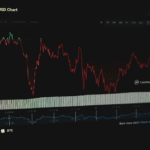
In the rapidly evolving world of cryptocurrencies, traders constantly seek ways to maximize their gains. One of the most effective techniques is arbitrage trading—profiting from price differences across various cryptocurrency exchanges. This approach takes advantage of market inefficiencies and can lead to quick profits, provided the trader understands the complexities and risks involved. This blog discusses advanced arbitrage strategies, various types of arbitrage opportunities, the risks, and tips for executing successful trades.
Types of Arbitrage in Cryptocurrency
1. Spatial Arbitrage
Spatial arbitrage is the most straightforward type of arbitrage, where traders buy a cryptocurrency on one exchange where the price is lower and sell it on another exchange where the price is higher. The difference in price creates an opportunity for profit. For instance, a trader may notice that Bitcoin is cheaper on Exchange A compared to Exchange B. By purchasing Bitcoin on Exchange A and selling it on Exchange B, the trader can pocket the price difference.
While this sounds simple, the fees involved in transferring assets between exchanges can quickly eat into profits, making it essential to calculate net gains after transaction costs.
2. Triangular Arbitrage
Triangular arbitrage takes advantage of discrepancies between three different cryptocurrencies on the same exchange. This involves moving funds between three assets in a cycle. For instance, if the exchange rate between Bitcoin (BTC), Ethereum (ETH), and a stablecoin like USDT is out of sync, a trader can convert BTC to ETH, then ETH to USDT, and finally USDT back to BTC to complete the cycle and gain a profit.
Triangular arbitrage requires advanced algorithmic trading techniques to execute trades swiftly as prices can fluctuate rapidly, erasing any potential gains.
3. Cross-Exchange Arbitrage
Cross-exchange arbitrage is similar to spatial arbitrage but involves executing trades simultaneously on different exchanges. This prevents price changes from erasing profits while transferring assets. In this strategy, traders typically use automated bots to track prices and execute trades in real-time.
The advantage of cross-exchange arbitrage is its ability to lock in profits instantaneously by buying on one exchange and selling on another without the delay of transferring funds between exchanges. However, the complexity and need for high-speed trading infrastructure make it less accessible to average traders.
Risks of Arbitrage Trading
Arbitrage trading in the crypto market isn’t without risks. One major concern is liquidity risk, where the order size needed to complete a trade could be larger than the liquidity available in the market. This can result in partial fills or significant slippage, which eats into profits.
Another risk is latency, where price changes can occur between the time you initiate and complete a trade, resulting in reduced or even negative profits. This is particularly relevant for cross-exchange arbitrage, where prices may shift by the time a trader transfers funds.
Additionally, transaction fees and withdrawal limits imposed by exchanges can erode profits. Some exchanges have higher withdrawal fees or slow withdrawal processing times, which can affect the efficiency of arbitrage trades.
Lastly, regulatory risks can also impact arbitrage strategies, as exchanges in different countries might have varying legal requirements. If a trader is not familiar with the regulations of the exchanges they are using, they could face legal complications.
Tips for Successful Arbitrage Trading
To execute successful arbitrage trades, traders must adhere to several best practices:
Use Automated Trading Bots
Arbitrage opportunities often last for only a few seconds. Using automated bots can help capitalize on price differences before they disappear. These bots continuously monitor price discrepancies across exchanges and execute trades faster than any human could.
Account for Fees and Delays
Traders should always calculate potential profits after accounting for transaction and withdrawal fees. Additionally, be mindful of withdrawal limits and delays, as they can severely impact profitability.
Diversify Across Multiple Exchanges
Spreading funds across multiple exchanges ensures you’re ready to execute trades when opportunities arise without having to transfer assets between exchanges, saving time and reducing risks.
Choose High Liquidity Pairs
Focus on cryptocurrencies with high trading volumes to avoid liquidity risk. The higher the volume, the less likely you are to experience significant slippage.
Monitor Market Trends
Stay updated with market news, as sudden price movements often create arbitrage opportunities. Major events like regulatory announcements or technological advancements can lead to significant price disparities across exchanges.
Discover Blockchain Excellence with Kenson Investments
At Kenson Investments, we offer top-tier digital asset support to help you navigate crypto asset markets. Our team of digital asset specialists is dedicated to providing legitimacy and transparency in blockchain asset investments.
Call now to explore how we can help you in this dynamic market!
Disclaimer: The information provided on this page is for educational and informational purposes only and should not be construed as financial advice. Crypto currency assets involve inherent risks, and past performance is not indicative of future results. Always conduct thorough research and consult with a qualified financial advisor before making investment decisions.
“The crypto currency and digital asset space is an emerging asset class that has not yet been regulated by the SEC and US Federal Government. None of the information provided by Kenson LLC should be considered financial investment advice. Please consult your Registered Financial Advisor for guidance. Kenson LLC does not offer any products regulated by the SEC, including equities, registered securities, ETFs, stocks, bonds, or equivalents.”














